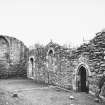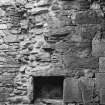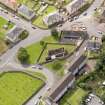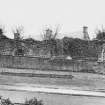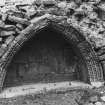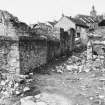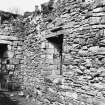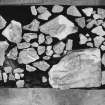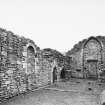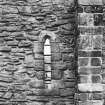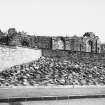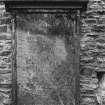Maybole, Abbot Street, St Mary's Church
Chapel (Period Unassigned), Church (14th Century)
Site Name Maybole, Abbot Street, St Mary's Church
Classification Chapel (Period Unassigned), Church (14th Century)
Alternative Name(s) Collegiate Church
Canmore ID 41536
Site Number NS30NW 6
NGR NS 30165 09876
Datum OSGB36 - NGR
Permalink http://canmore.org.uk/site/41536
- Council South Ayrshire
- Parish Maybole
- Former Region Strathclyde
- Former District Kyle And Carrick
- Former County Ayrshire
NS30NW 6 30165 09876
(NS 30160987) St. Mary's Chruch (NR) (Collegiate)
OS 25" map (1965)
A chapel of St. Mary was founded here by John Kennedy of Dunure in 1371. A college was founded in this chapel by him shortly before 2 February 1382; on the same date it is stated that the greater part of the building had been completed. The college continued to function for a time after the Reformation, mass being publicly celebrated there at Easter 1563. In the late 17th century, it is described as extant and entire, being used as the burial place of the Earl of Cassilis and other gentlemen who contributed to the putting of a roof on it when it was decayed. On its N side is a 'lately built' enclosure, the burial place of the Laird of Colaine.
The DoE consider that the present roofless ruin dates from the 15th c. The remains include a rich door in a revived First Pointed style, and an Easter Suplchre (arched tomb in the N wall) which is also an imitation of early work.
I B Cowan and D E Easson 1976; W Macfarlane 1907; S Piggott and W D Simpson 1970; D MacGibbon and T Ross 1897
The church, which is as described, is at present undergoing repairs by the DoE.
Visited by OS (JD) 5 December 1955
No change to the previous information.
Visited by OS (JRL) 2 August 1977.
EXTERNAL REFERENCES
SRO
Repair of Church & Manse 'which are ruinous'. Letter asking Lord Bargany to pay his share of the cost.
1698 GD109/3836
SRO
Protest of David Kennedy and others against warrant given to William Lord Bargany to apply vacant stipends of Kirk of Maybole to building a bridge over Water of Girvan while Kirk was ruinous.
1696 GD109/3929
Publication Account (1985)
The Oliginal church, dedicated to St Mary, was founded by Sir John Kennedy of Dunure in the early 1370s, and by 1382 it had been established as a collegiate church with endowments for one clerk and three chaplains. Its early foundation makes it one of the first collegiate churches in Scotland, and it marks the beginnings of a fashion that was to flourish in the following two centuries.
The present building, which has recently been restored, consists of the rootless remains of a rectangular church with a barrel-vaulted sacristy opening from the north wall. Although the original church was built in the late 14th century, the majority of the present fabric appears to be of 15th century), date but built in a deliberately archaic style. The earlier church was probably smaller than the present building and may have been extensively remodelled in the 15th century, with the only 14th century), details now visible being a narrow lancet window in the south wall and a nearby dressed corner. The fine south-west doorway is in imitation of 13th century work and is surmounted by an armorial panel bearing the Kennedy armd. At the east end of the north wall there is a tomb-recess with a pointed arch-head which, like the south-west doorway, is decorated with dog-tooth omament in a deliberately old-fashioned style. In the 17th century), a burial-vault was added on the north side of the church for the laird ofCulzean (No. 24); it has an elaborate doorway above which there is a large, but sadly rather decayed armorial panel bearing the arms of Kennedy impaled with those of an unknown family.
During the Reformation the house of the provost of the church, which stood close to the High Street, was the scene of a celebrated debate in 1561 between John Knox and Quentin Kennedy, abbot of Crossraguel.
Information from ‘Exploring Scotland’s Heritage: The Clyde Estuary and Central Region’, (1985).
































































































